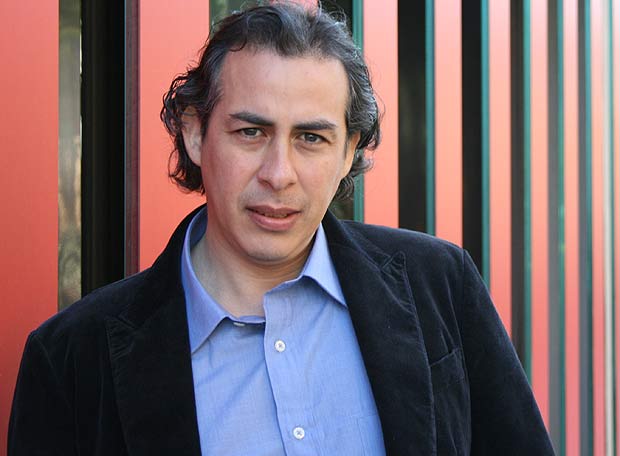
Eder. Óleo de Irene Gracia
Iván Thays
Roberto Bolaño a los 23 años. Foto: NYT, cortesía León Enrique Bolaño Hace unas semanas, Gustavo Faverón nos advertía del interés de The New York Times por desentrañar el affaire Bolaño. ¿Realmente su enfermedad se debe al abuso de heroína como dicen sus biógrafos al vuelo norteamericanos? Ayer se publicó en NYT finalmente el artículo «A Chilean Writer?s Fictions Might Include His Own Colorful Past» en el que el periodista Larrry Rother hace un resumen de lo que averiguó entre sus conocidos:Regarding Mr. Bolaño and drugs, numerous Latin American and European critics and bloggers have taken the side of his widow, accusing American critics and publishers of deliberately distorting the writer?s past to fit him into the familiar mold of the tortured artist. Mr. Bolaño?s life and work have been made into ?a trivial spectacle,? Julio Ortega, a Peruvian critic and scholar, wrote in El País, the leading daily in Spain. The focus of the heroin controversy is a four-page narrative that appeared in a collection whose title translates as ?Between Parentheses,? published the year after Mr. Bolaño?s death but not yet available in English. Called ?Beach,? the text consists of a single long sentence, whose opening words are, ?I gave up heroin and went back to my town and started on the methadone treatment administered me at the clinic. …? The title page of ?Between Parentheses? describes it as a collection of ?essays, articles and speeches.? In the introduction Ignacio Echevarría, a Spanish critic and editor whom Mr. Bolaño named as his literary executor, explains that the book should be seen as ?a type of ?fragmented autobiography? ? and ?personal cartography? of Mr. Bolaño. In separate interviews, however, Mr. Echevarría and Jorge Herralde, Mr. Bolaño?s publisher, said that the introduction and title page of future Spanish-language editions of the book would be changed to incorporate language to indicate that ?Beach? is fiction, as will the English-language version, which New Directions intends to publish next year. ?The situation lends itself to confusion because Bolaño liked to play tricks and create mysteries,? Mr. Herralde acknowledged. ?But he may just have been trying to lay a trap for his future biographers.? (…) In interviews by telephone from Spain and Mexico, Mr. Bolaño?s friends and associates suggested that he also embraced ambiguity. ?He created his own myth,? said the woman with whom the writer was romantically involved at the time of his death, but who asked that her name not be published because she wants to preserve her privacy. ?Nobody can deny that he played that game, and he would be the first to admit it.? Parece claro que el error parte del relato «Playa» que publicó en El Mundo en julio del 2000. Manuel Llorente, editor de aquel cuento, aclara al respecto: «I knew Bolaño was a writer who played with reality, who cultivated ambiguities and false identities, so I didn?t care whether the narrative he submitted was true or invented» Nada más que agregar.

